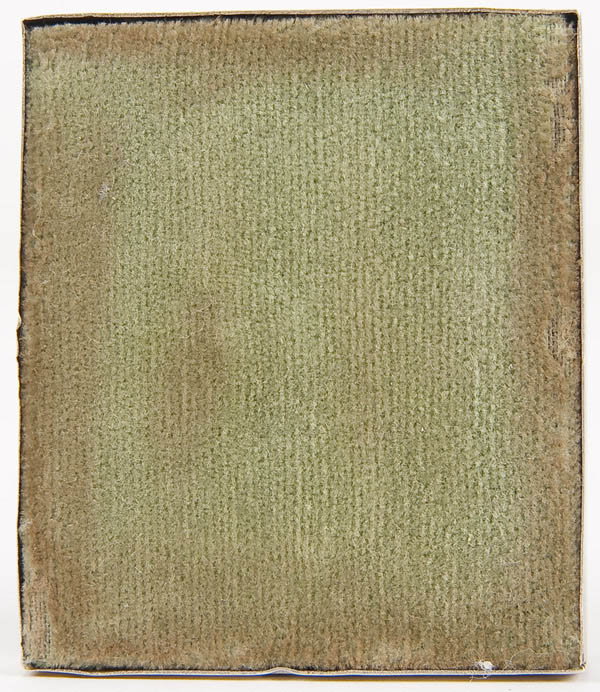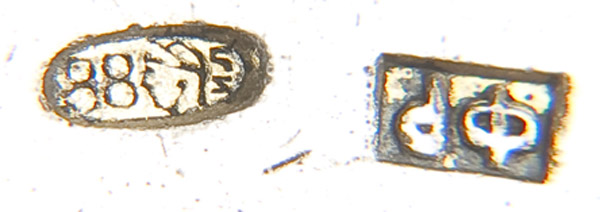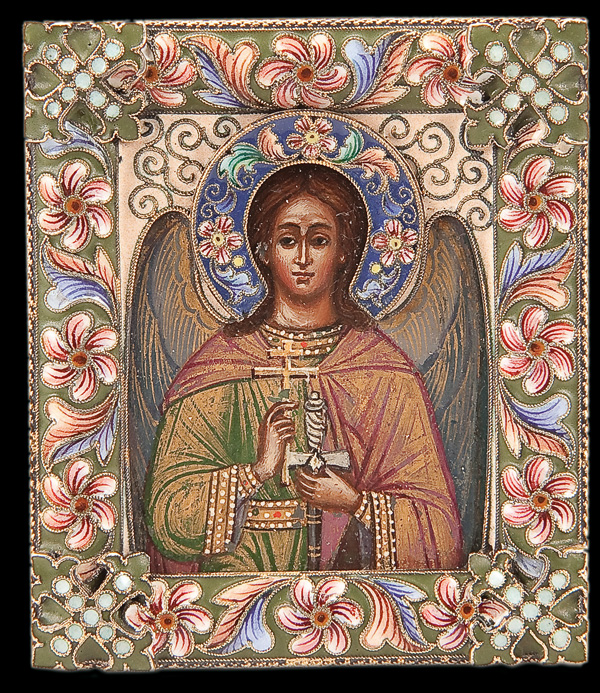Ðàáîòû Ðþêêåðòà, ïðîäàííûå íà àóêöèîíå Jackson
European & American Fine Art and Antiques
Including Russian & Asia Works
May 18th-19th, 2010
Lot: 106
A PERSONAL RUSSIAN ICON OF THE GUARDIAN ANGEL
Estimate $25000-$30000
Euro 18600-22300
Price Realized: $36,000.00
Including Russian & Asia Works
May 18th-19th, 2010
Lot: 106
A PERSONAL RUSSIAN ICON OF THE GUARDIAN ANGEL
Estimate $25000-$30000
Euro 18600-22300
Price Realized: $36,000.00


A VERY FINE PERSONAL RUSSIAN ICON OF THE GUARDIAN ANGEL, FEODOR RUCKERT, MOSCOW, 1899-1908.
At center a finely painted image of the Guardian Angel executed on metal and overlaid with an exceptional silver-gilt and shaded enamel riza. The halo with floral scrolls on a blue ground, the borders with shaded vari-colored enamel floral scrolls on a moss green ground and at each corner a cross with light blue beading. Hallmarked on the lower edge, Moscow, circa 1899-1908 and Cyrillic makers mark ÔÐ for Feodor Ruckert and 88 silver standard. The verso backed in slightly worn and faded light green velvet. 2.5 inches x 2.3 inches (7 x 5.8cm). The Guardian Angel (Angel Khranitel) in Orthodoxy is seen as the spiritual being who watches over each human. In iconography he is often found as a secondary figure depicted alongside ones name saint (see lot #117 of the Guardian Angel and St. Natalia). He is also very frequently found as a 'border saint' outside the main image. Icons such as the offered lot were treasured gifts received on special occasions and meant to be taken on ones travels. A popularly recited Orthodox prayer to ones guardian angel reads: O Angel of Christ, my holy Guardian and Protector of my soul and body, forgive me all my sins of today. Deliver me from all the wiles of the enemy, that I may not anger my God by any sin. Pray for me, sinful and unworthy servant, that thou mayest present me worthy of the kindness and mercy of the All-holy Trinity and the Mother of my Lord Jesus Christ, and of all the Saints. Amen. Perhaps no other Russian enamellist's work of the late 19th and early 20th century was so admired and sought out as was the work of craftsman Feodor Ivanovich Rückert. It is no wonder Faberge sought him out retaining him in 1887 as the head of his workshops output of cloisonné and shaded enamel objects. Ruckert's work was strongly influenced by ancient Russian examples which he drew on to develop his own unique interpretation of the Neo Pan Slavic style. So unique was his work, and so great the demand that Ruckert eventually worked independently for himself, while at the same time still fulfilling orders for Faberge as well as other retailers. It is Rückert's work more than any other of which the standards of enameling are measured. For a similarly decorated riza by Rückert see, Faberge Imperial Craftsman and His World, Dr. Geza Von Habsburg, Booth-Clibborn Editions, London, 2000, page 82, illustration #89.

